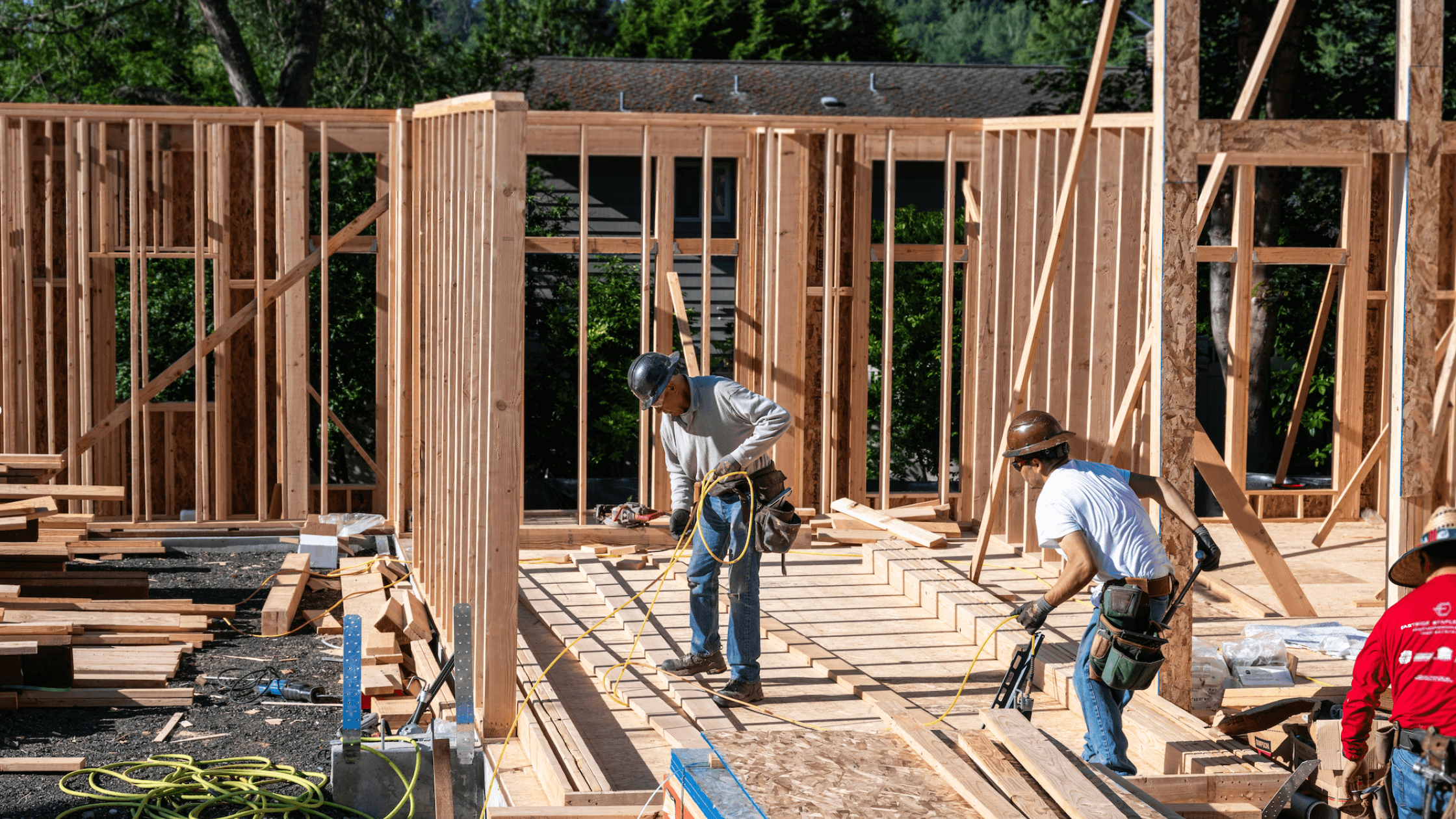For decades, construction productivity has lagged behind other industries, causing delays, rising costs, and lower profits. While the global economy’s labor productivity grew by 2.8% annually over the past twenty years, the construction sector’s productivity increased by only 1% per year during the same period. As global demand for new infrastructure grows, improving efficiency is no longer optional. Without change, the industry risks falling short of future demand, leading to massive economic impacts.
Why productivity has declined in construction
Productivity in construction has remained stagnant for decades, even as other industries have made significant gains. Several factors continue to hinder progress, making it harder for companies to complete projects on time and within budget. Addressing these challenges is necessary to improve efficiency and meet growing global demand.
- Project conditions: Complex project designs, brownfield developments, and poor risk management often slow construction progress. Unexpected site issues and design changes can cause delays and increase costs, making it harder to keep projects on schedule.
- Slow technology adoption: Construction companies have historically invested less than 1% of their revenue in technology, compared to 3-5% in industries like manufacturing and aerospace. This slow adoption limits the use of tools like building information modeling (BIM), automation, and prefabrication, which could streamline workflows and reduce delays.
- Market conditions: Fluctuating demand, rising material costs, and supply chain disruptions slow construction progress. For example, in 2024, the industry experienced a 10% increase in nominal value added and a 12% increase in gross output, indicating strong demand. However, this growth was accompanied by challenges such as rising material costs and supply chain disruptions. These challenges have delayed access to essential materials, impacting project timelines and budgets.
- Government policies: Strict regulations and slow permitting processes often delay construction projects. New environmental laws and safety regulations add time and costs to projects. For example, permitting delays in the U.S. can add several months to a project’s timeline, impacting productivity.
- Education and training: The construction industry faces a major skilled labor shortage, slowing project progress. In the U.S., there is a gap of about 430,000 construction workers. Without enough trained workers, projects take longer, and productivity drops.
- Low profit margins: Tight profit margins in construction make it difficult for companies to invest in new technology and workforce training. According to the 2024 Benchmarker, the average profit margin in 2023 was 6.3% of revenue. This is up from 5.0% in 2022, but it shows how tight the margins are.
- Lack of system-wide productivity focus: Many construction companies prioritize meeting deadlines over improving workflows. This focus on project completion often overlooks inefficiencies, leading to delays and higher costs.
5 ideas to boost productivity in the construction sector

Many construction companies continue to rely on traditional methods, focusing on meeting deadlines rather than improving work processes. While this approach may complete projects in the short term, it limits long-term growth and reduces competitiveness. With rising material costs, labor shortages, and tighter profit margins, sticking to outdated practices only makes it harder to stay on schedule and control costs.
Investing in productivity improvements helps companies work smarter, not harder. Adopting modern solutions can speed up project timelines, lower expenses, and reduce mistakes. Companies prioritizing workforce development, new technologies, and better project management will gain a stronger foothold in a demanding market.
1. Upskill your workforce
A skilled workforce is the foundation of a productive construction company. Regular training, certifications, and apprenticeships help workers stay updated on new techniques, safety practices, and industry standards. For example, companies implementing regular safety training see a 25% reduction in workplace injuries, leading to fewer delays and lower costs.
2. Utilize technology to your advantage
Using modern communication tools and drones can make construction projects more efficient. For example, the Kraaft app allows teams to share photos, voice notes, and documents on dedicated news feeds, improving on-site communication. On the other hand, technology like drones comes equipped with high-definition cameras that can quickly survey large areas, providing accurate data for site analysis and progress monitoring.
3. Reform project management
Implementing project management software enhances collaboration and reduces errors in construction projects. For example, SmartBuild offers a suite of tools to manage RFIs, submittals, changes, and contracts within a single platform. By centralizing project information, your company minimizes miscommunications and streamlines workflows, leading to more efficient project delivery.
4. Adopt modular construction
Modular construction involves building sections of a project in a factory setting and then assembling them on-site. This method can reduce construction time by 30% to 50% compared to traditional methods. Modular construction is also completed in a controlled environment, improving quality control and minimizing weather-related delays.
5. Invest in supply chain optimization
Improving procurement, logistics, and inventory management can help avoid delays in construction projects. By adopting supply chain optimization strategies, companies can ensure timely delivery of materials and reduce unnecessary costs due to delays.
Bottom line
Boosting productivity in construction is becoming more necessary than ever. The United States faces a housing shortage of approximately 4.5 million homes, which is exacerbated by underbuilding. This deficit has driven up rents and home prices, making housing unaffordable for many families. Compounding the issue, the construction industry struggles with labor shortages, requiring an estimated 723,000 new workers annually to meet demand. Without changes in construction productivity and innovative solutions, these challenges will continue to hinder economic growth and limit opportunities for American workers.
The future of construction depends on bold action. If you’re looking to be a part of the solution, you need to stay up to date on the latest developments in construction. Our weekly newsletter covers game-changing strategies and the latest innovations so you can stay ahead, cut costs, and build a stronger tomorrow. Subscribe today to lead the change and shape the future of construction.



1 comment